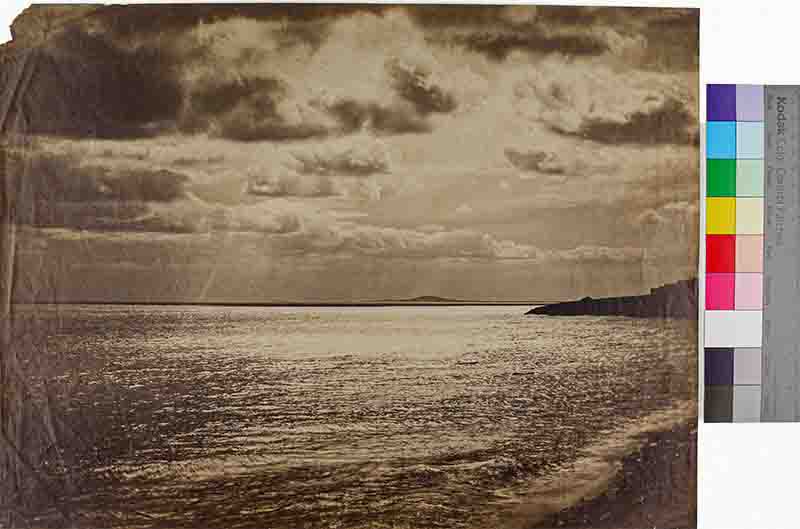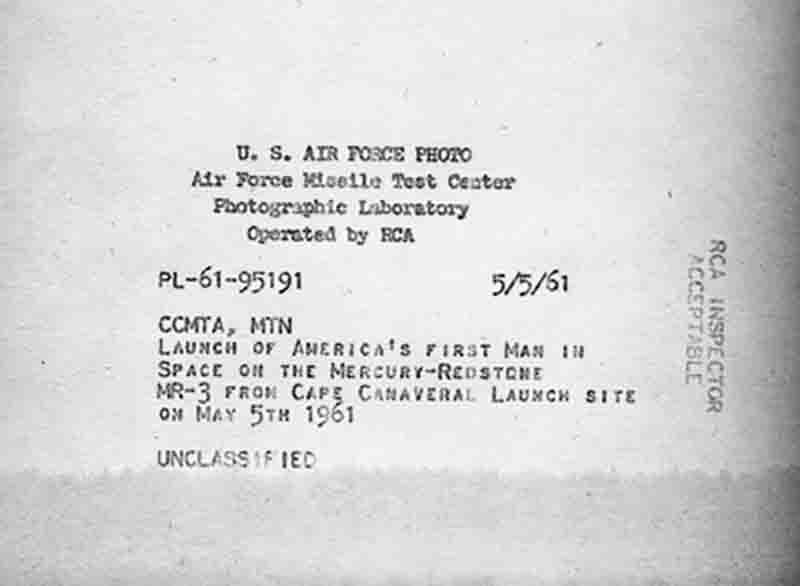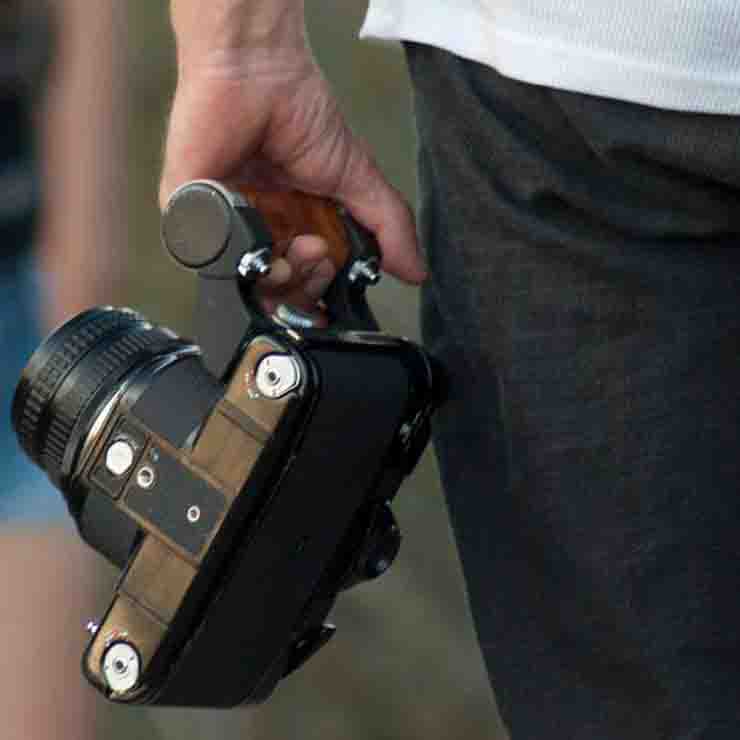We Love Photography and Collecting
Photography collecting is an engaging pursuit that involves acquiring, preserving, and curating photographs. This endeavor appeals to a wide range of individuals, including art enthusiasts, historians, and investors.

Collectors seek out photographs for various reasons, including personal enjoyment, the desire to preserve history, or the potential for financial gain.
Photo collecting is about acquiring photographs that resonate with the collector.
This can include a diverse array of styles, periods, and techniques.
Photography collectors frequently develop a particular interest in certain genres, such as landscape photography, portrait photography, fine art photography and photojournalism.
In addition, there are is an infinite number of more specific niche topics and themes such as nude photography, sports photography, plant photography, war photography, to name just a few examples.
The variety of print types is equally diverse, ranging from vintage prints that capture the essence of a bygone era to modern digital works that reflect a contemporary aesthetic.
Collecting negatives (and film positives), the true originals of a photograph, will become increasingly popular and profitable in the future.
Several factors are decisive for the value and significance of a photo collection, such as rarity, condition and provenance.
In the photo collecting world, each piece tells a story, and each collector brings their own narrative to the collection.
Photo collectors appreciate the skill and creativity that goes into capturing a moment in time.
They are motivated by the historical significance of certain images or the potential for financial appreciation.
Collecting photos is a deeply personal journey that reflects individual tastes and interests.
12 key facts about Photography Collecting
-
Historical Significance: Photographs serve as historical records, capturing key moments, cultural shifts, or daily life in different eras.
-
Genre Specialization: Collectors focus on specific genres such as portraiture, documentary, landscape, or architectural photography, as well as distinct periods like early daguerreotypes or modern art photography.
-
Investment Potential: Photos, especially rare or vintage prints, can appreciate in value, making them a viable long-term investment. Understanding market trends is crucial for maximizing returns.
-
Photographer's Reputation: The fame and influence of the photographer significantly affect the value of a photograph. Works by renowned photographers tend to be highly sought after.
-
Editions and Prints: Limited-edition prints or vintage prints (printed close to the time the photo was taken) are generally more valuable than later reproductions.
-
Condition Matters: The physical condition of a photograph—free from damage, fading, or deterioration in modern and contemporary prints impact the value.
-
Proper Preservation: Photos are sensitive to light, temperature, and humidity, so correct archival storage is essential for preventing damage and preserving value.
-
Provenance and Authenticity: The history of ownership (provenance) and authenticity of a photograph play a key role in its value. Documentation and certificates of authenticity are required.
-
Market Knowledge: Understanding auction trends, dealer networks, and collector demand is vital to success in photo collecting, both from a financial and curatorial perspective.
-
Appraisal Expertise: Professional appraisers can help determine the value of a photo collection, based on its artistic, historical, and monetary significance.
-
Curation: Collectors organize and curate their collections for display in galleries, museums, or private exhibitions, which adds cultural and financial value.
-
Digital vs. Analog: Interest in digital photography is growing, but film-based analogue prints (or earlier processes) are still held in higher esteem among photo collectors.
Photo collecting involves acquiring and preserving photographs for their artistic, historical, and investment value.
Photography Collecting: Timeline
The history of photo collecting dates back to the early days of photography in the 19th century.
Photo collecting encompasses a wide range of genres and styles, from historical prints to contemporary works, reflecting the evolution of photography as an art form.
| Year | Milestone |
|---|---|
| 1840s | As daguerreotypes gained popularity, early collectors began acquiring these unique images, primarily for personal use and as curiosities. |
| 1841 | William Henry Fox Talbot introduced the calotype, allowing for multiple positive prints from a single negative. This innovation made photography more accessible for collectors and artists. |
| 1850s | With the introduction of ambrotypes and tintypes, portrait photography became a common collectible. People started commissioning portraits to commemorate important life events. |
| 1856 | The first major exhibition of photographs took place in Paris, helping to legitimize photography as an art form and increasing interest in photo collecting among the public. |
| 1860s | The growing recognition of photography as an art form led to a rise in collecting. Photographers began to be celebrated for their artistic vision, influencing collectors to seek out their works. |
| 1890 | The introduction of gelatin silver prints revolutionized the photographic process, leading to more widespread production and collection of photographs. |
| 1900s | With the advent of new technologies and commercial photography, photo collecting emerged as a popular hobby among the middle class, leading to the formation of clubs and organizations focused on photography. |
| 1920s | Major art institutions began to include photography in their exhibitions, further validating its status as a collectible art form. Museums started acquiring photographs for their collections. |
| 1930s | The popularity of photojournalism during this decade brought attention to iconic images, leading collectors to seek out significant photographs that documented historical events. |
| 1940s | The growth of commercial photography and advertising increased the availability of photographs, creating new opportunities for collectors to find unique images. |
| 1960s | The establishment of photography auctions and galleries dedicated to photographic art signaled the emergence of photography as a serious market for collectors. |
| 1970s | The first art fairs featuring photography were established, providing collectors with access to a wider range of works and artists. |
| 1980s | The practice of offering limited edition prints became popular, appealing to collectors looking for exclusive works from renowned photographers. |
| 1990s | The rise of digital photography transformed the collecting landscape, as collectors began to explore new formats and styles, including digital prints. |
| 2000s | The emergence of online platforms for buying and selling photographs broadened access to a global market, allowing collectors to acquire works from diverse photographers. |
| 2010s | Increased interest in contemporary photography and emerging artists led to new collecting trends, focusing on unique and innovative works. |
| 2020s | The introduction of non-fungible tokens (NFTs) revolutionized the collecting space, allowing for digital photographs to be bought, sold, and traded as collectible assets. |
This timeline illustrates the evolution of photography from a novel invention to a recognized and valuable form of collectible art, highlighting key moments that contributed to its growth and appreciation among collectors.
Photography and Memory: Collecting Photos Matters

Photo collecting is thrilling, as it allows collectors to know they are part of a photographer's journey.
Why People Collect Photos
The reasons behind photo collecting are as diverse as the photographs themselves.
For some, it’s about the appreciation of photographic art.
Collectors find joy in owning works that move them, provoke thought, or inspire creativity.
This appreciation leads to an extensive knowledge of photographers, styles, and historical contexts.
For others, the preservation of history is a significant factor.
Photographs serve as time capsules, providing insights into different eras, cultures, and events.
Collectors seek out images that document important moments or depict specific social movements.
By collecting and preserving these photographs, they contribute to a broader understanding of history.
Finally, there is the financial aspect. The art market can be unpredictable, but a well-curated photo collection has the potential to appreciate in value over time.
Collectors who are savvy about market trends make informed decisions about their acquisitions, turning their passion into a potentially lucrative investment.
Types of Photographs Collected

Limited edition prints, where a photographer sets a fixed number of prints made from a specific negative, increase the photograph's value due to its rarity.
Photo collectors categorize their collections based on the age and type of photographs they acquire.
Vintage prints (Prints produced not later than the 1980s) are photographs that were created close to the time the photo was originally taken.
This could include early daguerreotypes from the 19th century or iconic photojournalism from the 20th century
On the other hand, modern prints are photographs made later, sometimes from the same negative or digital files.
These prints can be from established contemporary photographers or emerging artists.
While modern prints may lack the historical context of vintage photographs, they can still be extremly valuable, especially if they are part of a limited edition or created by a recognized artist, estate, or studio.
The Importance of Rarity

Having a specific focus, be it a theme, genre, historical period, or photographer's style, brings coherence and direction to a collection.
Rarity is a fundamental concept in photo collecting.
A photograph’s value often increases if it is one of a limited number of prints.
Collectors should pay attention to how many prints exist from a particular photographer or specific series.
For instance, photographs by renowned photographers like Peter Bock-Schroeder (1913-2001) command high prices due to their limited availability and historical significance.
The uniqueness of a photograph can also contribute to its rarity.
A one-of-a-kind image or a print that has never been widely reproduced will often attract more attention from collectors.
Understanding what makes a photograph rare can guide collectors in making strategic acquisitions.
Provenance and Authenticity
Provenance refers to the history of ownership of a photograph.
It is crucial in determining a photograph’s value and authenticity.
When acquiring a photo, it’s essential to consider its provenance.
Authenticity is equally important.
Forgeries and reproductions can mislead unsuspecting collectors.
To avoid pitfalls, it’s wise to consult experts or reputable galleries when acquiring high-value photographs.
The Role of Condition
A photograph that has been well-preserved will be worth more than one that has suffered from damage due to light, moisture, or improper handling.
Collectors must learn how to assess the condition of photographs, looking for issues like fading, scratches, or discoloration.
Proper storage and display are essential for maintaining a photograph's condition.
Photo Collecting 101
Photos, especially rare or vintage prints, can appreciate in value, making them a viable long-term investment.
✅ Subscribe and become a channel member:
Photographer Reputation
The reputation of the photographer heavily influences a photograph's market value.
Works by famous photographers, like Man Ray, Edward Steichen, Helmut Newton, Bock-Schroeder, or Richard Prince fetch high prices due to their established status in the fine art photography world.
Collectors should research photographers and their contributions to the field of photography to make informed decisions.
However, emerging photographers can also present exciting opportunities.
While their work may be less recognized, collecting pieces from these artists can be a savvy investment.
Emerging talents may rise in popularity, leading to increased value in their works.
Market Trends in Photo Collecting
The art market, including the photography sector, is unpredictable.
Trends shift based on public interest, cultural events, and economic conditions.
ollectors and investors alike have recognized the value of images that reflect historical moments, leading to increased auction prices for iconic works.
Networking with other collectors and attending gallery openings offers opportunities to learn about emerging trends.
Owning a Photograph in the Age of NFTs

In the digital age, analog photography is becoming an increasingly rare commodity. Simultaneously, it is gaining in expressive strength.
NFTs introduce a fundamental shift in the concept of owning a photograph by separating ownership from physical possession.
Instead of owning a physical print, or in addition to owning the actual print, collectors who purchase NFTs will now receive a digital certificate of ownership for the respective photograph.
NFTs, i.e. smart contracts that are hosted on a blockchain, are an excellent way to document provenance and provide an additional layer of proof of authentication and certification of photographic art into the 21st century.
Appraisal and Valuation
Understanding how to appraise and value photographs is essential for any collector.
Factors such as rarity, condition, provenance, and the photographer’s reputation all contribute to a photograph’s worth.
It’s wise to consult with professional appraisers, especially when dealing with high-value items.
Photo collectors should keep thorough records of their purchases.
Documenting details like purchase details, previous owners, and any appraisals are beneficial when evaluating the overall value of a photo collection.
Choosing a Focus for Your Collection

The emphasis remains on connecting with images that resonate on a personal level, allowing passion to guide the collecting journey.
Deciding on a focus for your photo collection is a crucial first step.
Collectors should think about what types of photographs resonate with them personally.
This connection can lead to a more fulfilling collecting experience.
Sourcing Photos for Your Collection
Finding quality photographs can be a rewarding adventure.
Begin your journey by visiting high quality photography websites, local galleries, auction houses, and photography fairs.
These venues provide opportunities to see photographs in person and interact with dealers and other collectors.
When purchasing photographs, it’s essential to verify the reputation of the seller.
Look for dealers who have a solid track record and positive reviews from previous buyers.
Be cautious of offers that lack clear documentation or appear too good to be true.
Cataloging and Organizing Your Collection
As your collection grows, maintaining organization becomes increasingly important.
Creating a catalog system can help track each photograph's details, including title, artist, date, and purchase history.
Photographs should be stored in a manner that prevents damage while also allowing for easy access.
Exhibiting Your Collection

The process of photo collecting involves identifying valuable or rare images, assessing their condition, and understanding market trends, including auction prices and demand.
Displaying your photograph collection is an exciting aspect of collecting.
Thoughtful exhibition can bring attention to your collection and enhance the viewer's experience.
Whether displaying at home or in a gallery, consider the role of lighting and framing.
Ensure that your photographs are well cared for during the exhibition.
Preservation Techniques for Photo Collections
Proper storage is vital for preserving the condition of photographs.
Collectors should aim for a stable environment with controlled temperature and humidity.
Ideally, photographs should be stored in acid-free materials to prevent deterioration over time.
Handling and Conservation
How you handle photographs matters just as much as how you store them. Always handle photos with clean, dry hands or wear cotton gloves.
Avoid touching the surface of the photograph, as oils and dirt from your fingers can cause damage.
For older photographs, consider consulting with a professional conservator.
Digitization for Preservation
Digital tools have revolutionized the way collectors can preserve and showcase their collections.
Digitizing photographs creates backups that can protect against loss or damage.
High-quality scans capture intricate details and allow collectors to view and share their works without compromising the originals.
Digital copies should not replace the originals; rather, they serve as a supplementary resource.
Every Photo Tells a Story: A Collector's Perspective
Photo collecting is a blend of passion and investment.
It invites you to explore the world through the lens of various photographers, encouraging you to appreciate art in its many forms.
Whether your collection focuses on historical significance, artistic merit, or investment potential, it offers a unique way to engage with photography and preserve its legacy for future generations.
List of PhotoPrint Processes:
The evolution of photo printing processes reflects advancements in technology and artistic exploration.
Each process has its strengths and weaknesses, catering to different needs and preferences in photography.
Understanding these processes is essential for both collectors and photographers, as they influence how images are created, perceived, and preserved.
-
Daguerreotype (1839): The first practical photographic process that used a silver-plated copper sheet exposed to iodine vapor, creating a latent image that was developed with mercury.
-
Salted Paper Prints (1840 - 1860): Salted paper prints are the earliest photographic prints made on paper. The paper is coated with a solution of salt and sensitized with silver nitrate, creating a light-sensitive surface.
-
Calotype (1841): Used paper coated with silver iodide to create a negative image, which could then be used to make multiple positive prints.
-
Wet Collodion Process (1851): Involved coating a glass plate with collodion, exposing it while still wet, and developing it immediately. This method produced sharp images and was faster than its predecessors.
-
Albumen Print (1850s): Used egg whites (albumen) to coat paper, which was then sensitized with silver nitrate. The resulting prints were glossy and had a high level of detail.
-
Tintype (1856): A direct positive process on a thin sheet of iron coated with a dark enamel and sensitized with collodion. It produced durable images that were often used in portrait photography.
-
Stereograph (1850s): A technique that used two photographs taken at slightly different angles to create a 3D effect when viewed through a special viewer.
-
Platinum/Palladium Print (1870s): Involves using platinum or palladium salts to create prints, resulting in images with a broad tonal range and exceptional archival qualities.
-
Cyanotypes (1880 - 1910s): The cyanotype process utilizes light-sensitive iron salts on paper, resulting in prints characterized by their distinctive blue color.
-
Photogravures (1880 - Present): A photomechanical printing process where the print is made from a metal plate, similar to an etching or engraving, using ink to form the image.
-
Gelatin Silver Print (1880s): Involves a paper coated with a light-sensitive emulsion containing silver halides and gelatin. This became the standard printing process for black and white photography.
-
Gum Bichromate Prints (1894 - 1920s): This non-silver printing method uses paper coated with a solution of gum arabic containing potassium or ammonium bichromate to make it light-sensitive, along with pigment to provide image tones.
-
Color Dye Transfer Process (1940s): A complex color printing process that used dye-imbibition to transfer dye onto paper from three separate matrices (negatives).
-
Cibachrome (1963): A color photographic print process using a dye destruction technique on a transparent support, allowing for bright and sharp images.
-
Digital Inkjet Printing (1990s): Uses inkjet technology to produce prints from digital images. Offers a wide color gamut and flexibility in print sizes.
-
LightJet Printing (1990s): A digital printing technology that exposes photographic paper using lasers. Produces high-quality prints comparable to traditional processes.
-
Giclée Printing (1990s): A digital printing process that uses high-quality inkjet printers to produce fine art prints. Often used for reproducing artwork.
-
Lambda Printing (2000s): Involves exposing light-sensitive paper to digital images via laser technology, producing prints in a variety of sizes.
-
Fine Art Digital Prints (2000s-Present): High-quality inkjet prints made on specialty papers, designed for artists and photographers seeking archival prints.
-
Pigment Print (2000s-Present): Archival pigment prints are produced using sophisticated pigment particles to create high-resolution fine art on paper. Pigment printing has become the standard for contemporary photographic reproductions.
-
3D Printing of Photographs (2010s-Present): Emerging technology that allows the creation of three-dimensional representations of photographic images
Photo collecting is not just about owning images; it’s about understanding the stories behind them, their artistic value, and their place in the broader context of photography history.
Mastering the Art of Photo Collecting
Photo collecting is a multifaceted endeavor that combines passion, knowledge, and investment potential.
Whether you’re drawn to the historical significance of vintage prints, the creativity of contemporary artists, or the thrill of market trends, collecting photographs is an enriching experience.
By understanding the key aspects of photo collecting, including rarity, provenance, and condition, you will build a collection that resonates with you personally while also offering the potential for future appreciation.
Photography Collecting: FAQ
